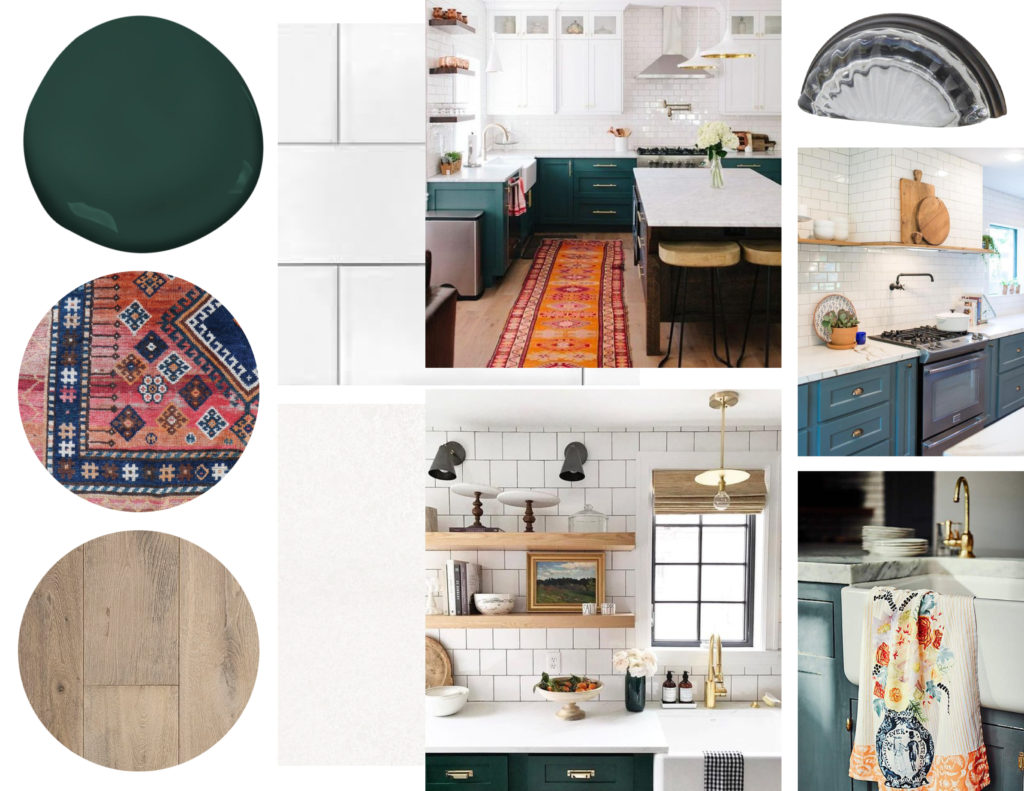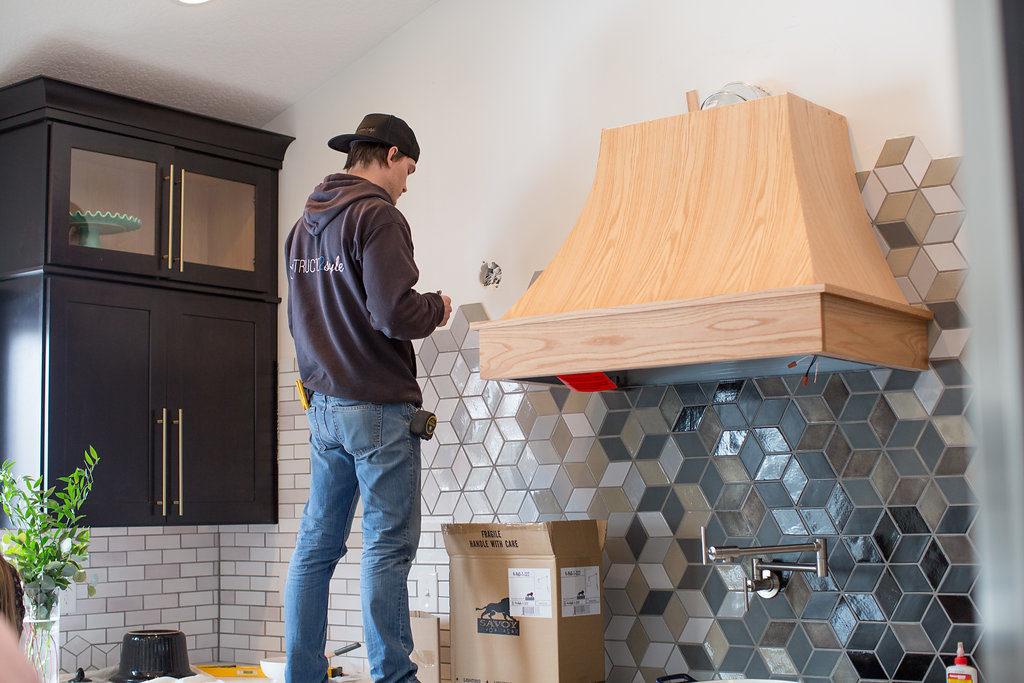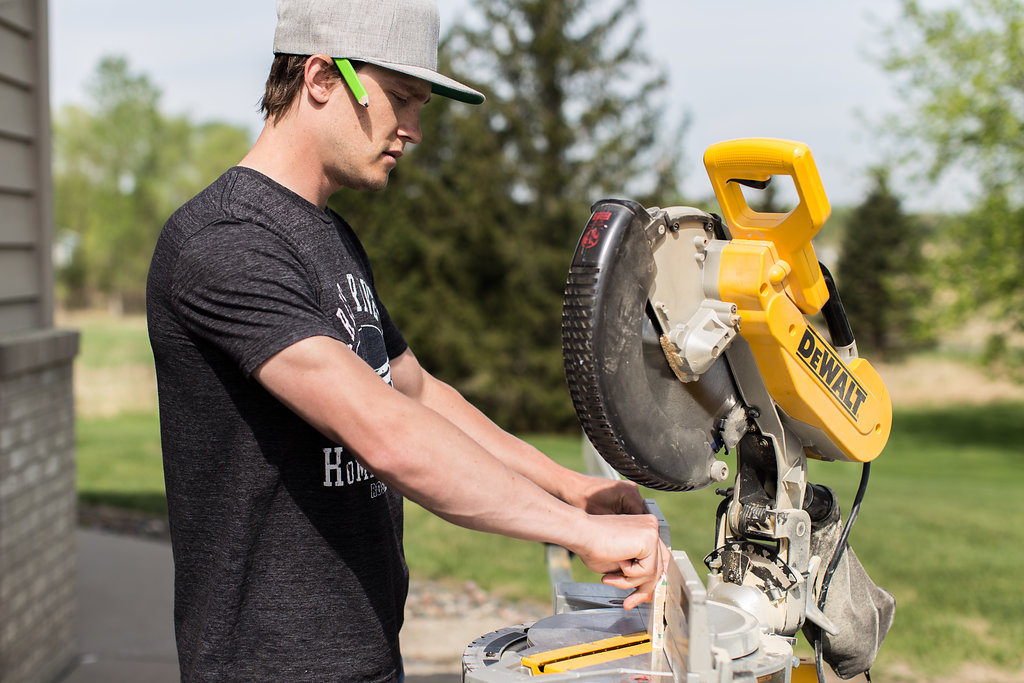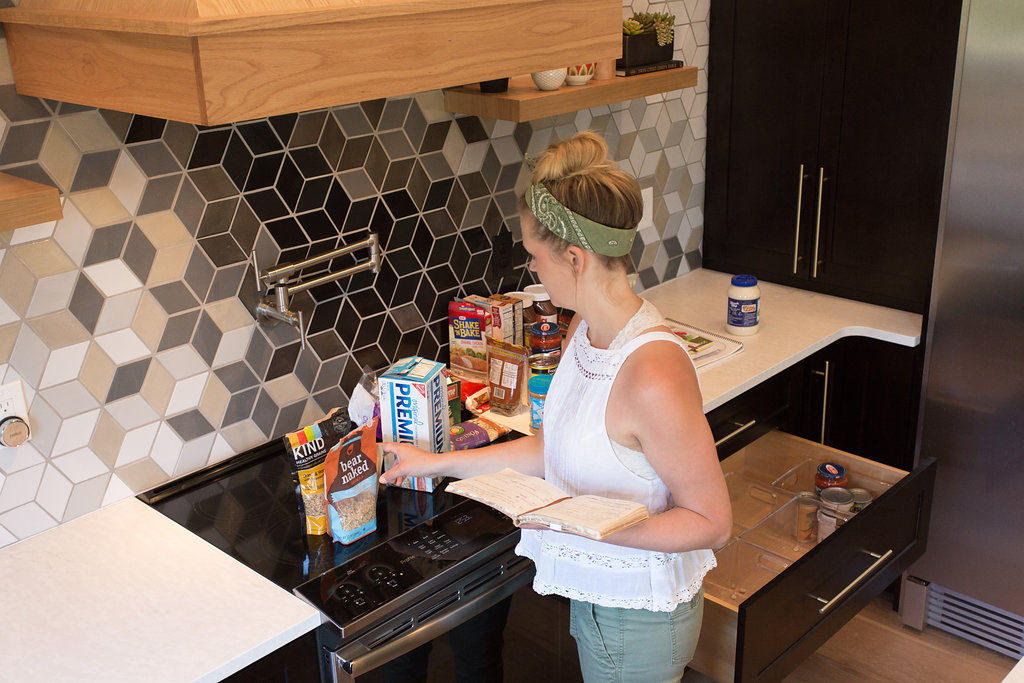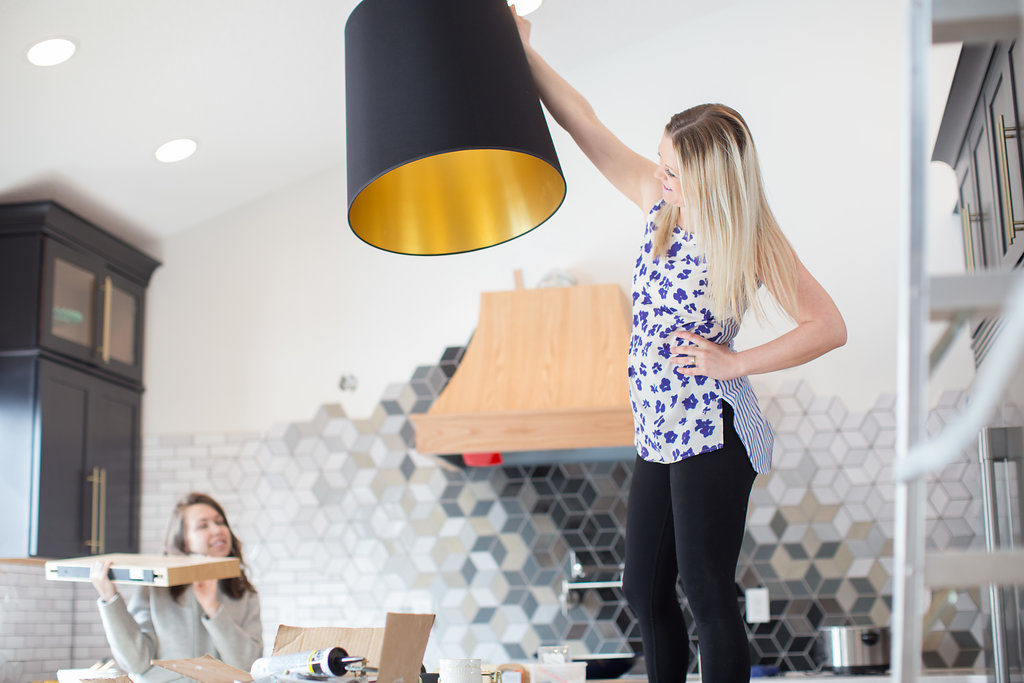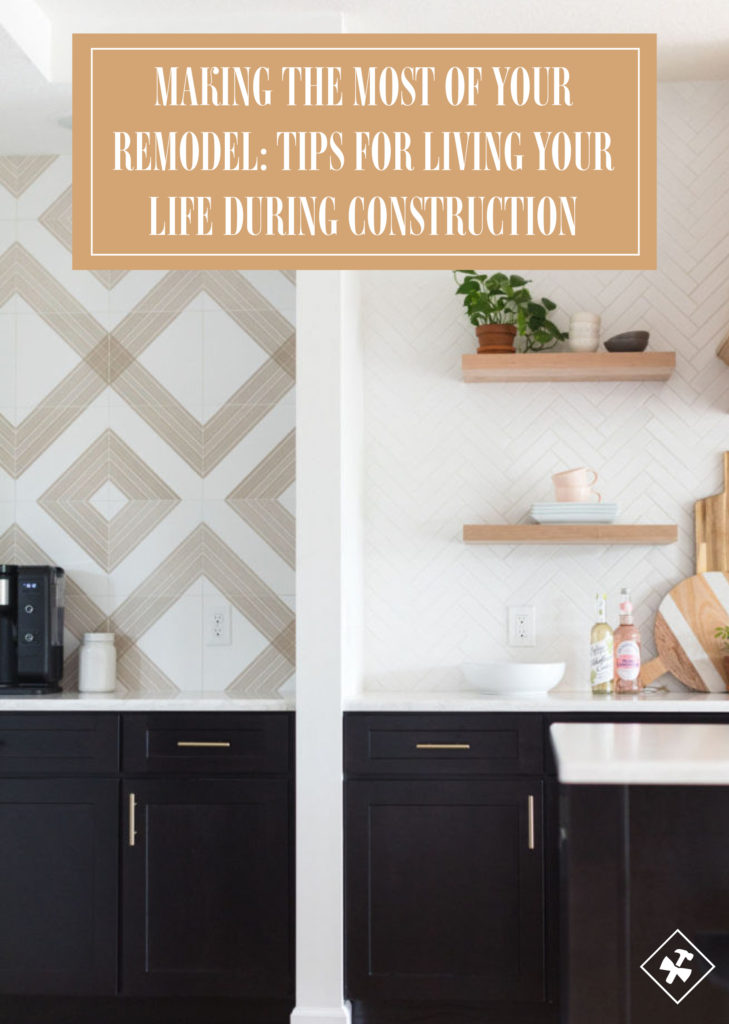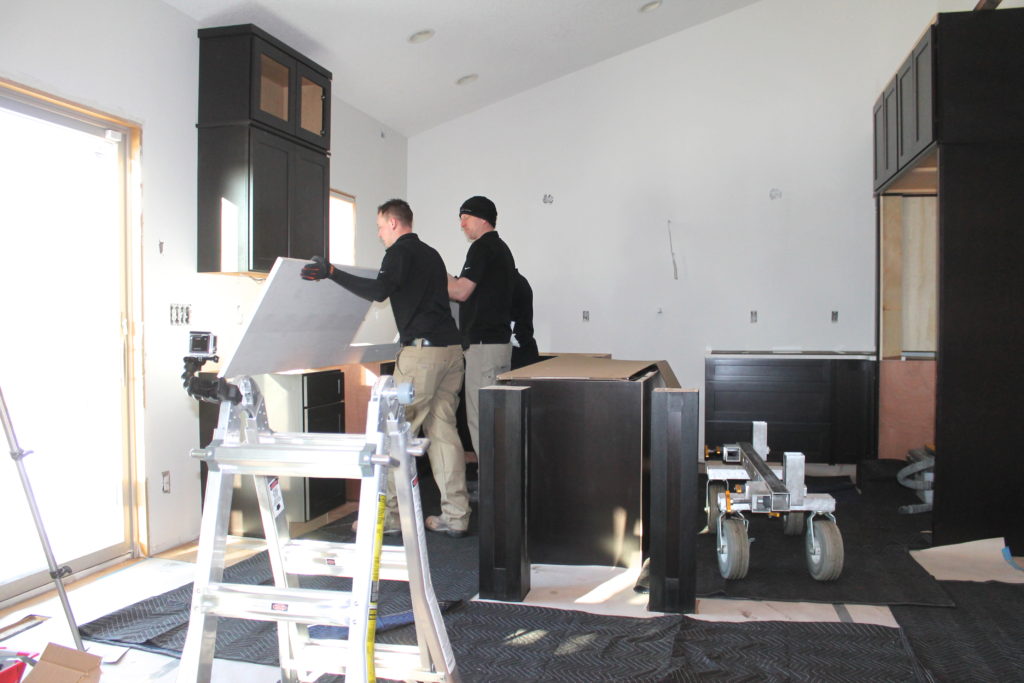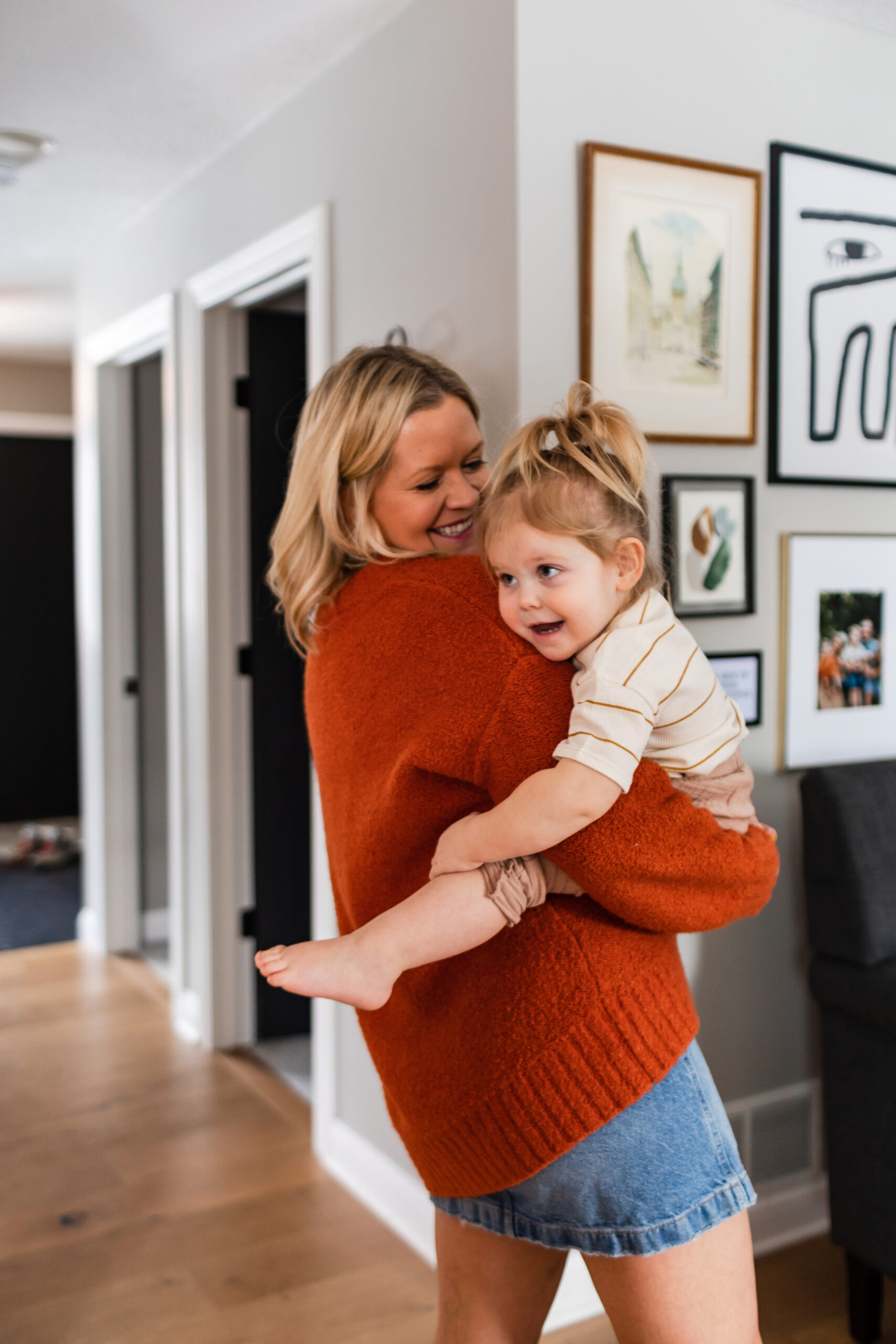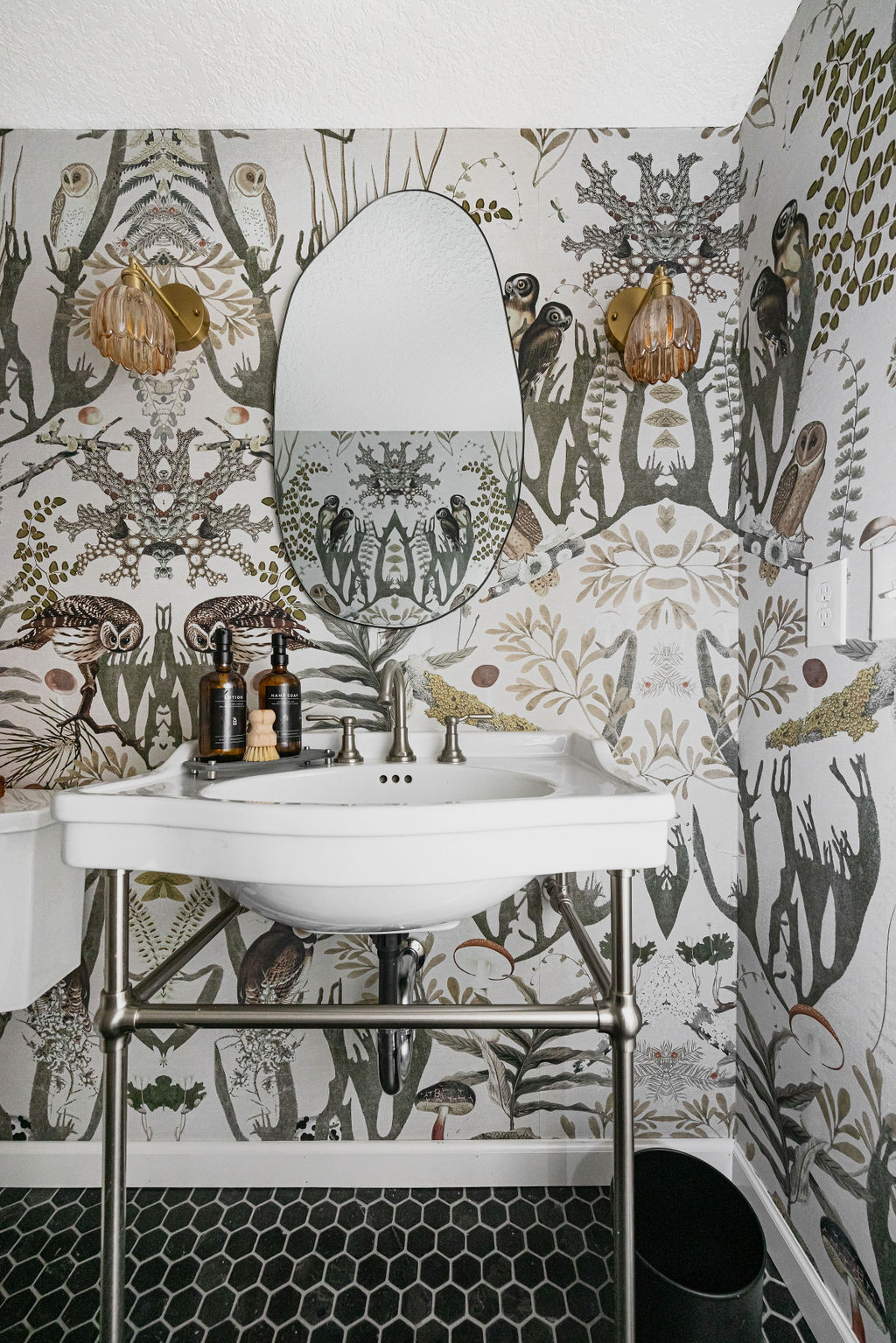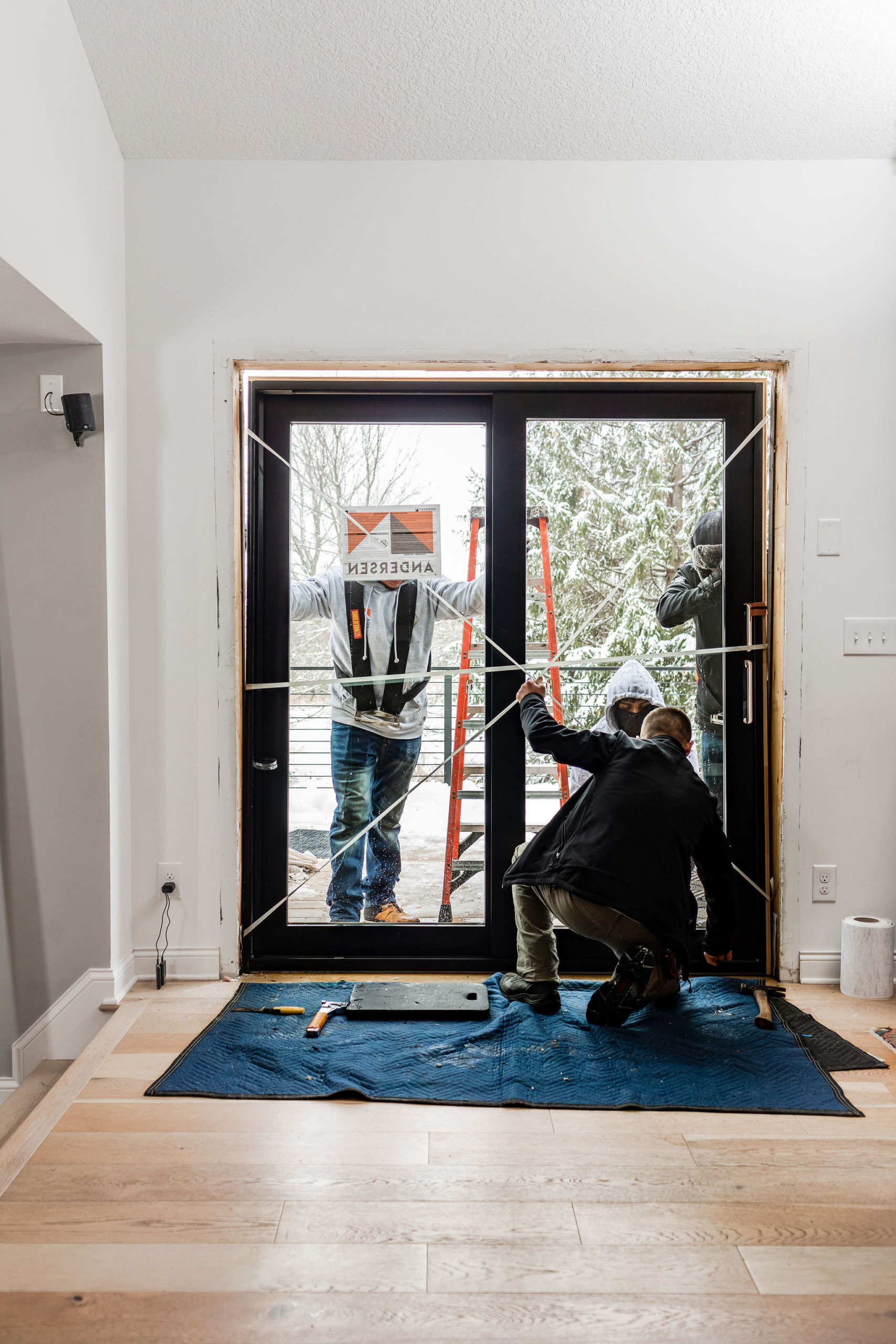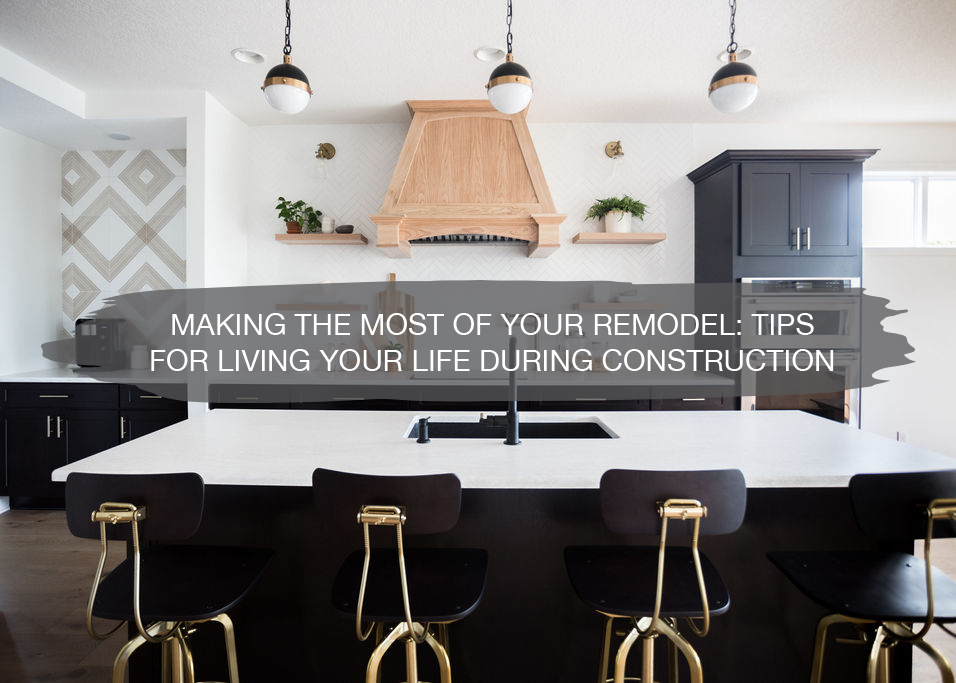
Remodeling your house can be an exciting thing to do, especially before and after the project. But during can be a little rough.
The beginning stages of making selections and picking out the finishings can be an enjoyable process. Once your project is done, you feel like you have a completely new space with options that you never had before. What they don’t tell you is in the months during the project, your house can feel like anything but home.
There will be early wake up calls, loud noises, late nights as well as random people in and out of your home. Whether you are having a kitchen or a bathroom remodeled, the transition into having these spaces redone can be daunting. This involves completely moving all of your belongings out of the space and finding a temporary home for them. Sometimes for up to six months.
To make this process a bit more smooth and maybe even helpful, here are some tips on making the most of the time you are having a remodel done.
Create a schedule with your contractor
Most people are surprised at how many different trucks/vans they will see in their driveway during the duration of a project.
There are a lot of moving parts and a lot of different parts into making a remodel successful. That said your contractor should know the order in which these things will happen (i.e., demolition company comes in first, then electrician, then plumber, etc.).
Sit down and make a schedule so you have a rough idea when people will come. On the schedule write down the names of the sub-contractors and their company name. This will help you anticipate who will be in your house and being more comfortable with it. Also, establish a start and stop time so that your contractor can pass that message on to all of the sub-contractors.
Purge your “stuff”
Again, whether it be a bathroom or a kitchen, you will need to remove all of your belongings from the area before the workers can start. We also have a full blog post on how to declutter and organize your kitchen when undergoing a remodel –> Organizing your Kitchen Cabinets.
This is a good opportunity to go through all of the stuff that has accumulated in these spaces. For instance, spice cabinets are often filled with hundreds of random spices that you used one time seven years ago. Now is a great time to go through and check expiration dates on all of your food-related items.
Maybe your vanity is filled with old medication, or you find out that you have 19 tubes of chapstick that you bought for a good deal 12 years ago. Throw them away. This will help you stay healthy by not consuming expired goods but will also declutter the space for when you move everything back in.
Get settled
Often when a client gets their kitchen taken away from them for six months, they find themselves eating out a lot. Although this may be acceptable from time to time during the project, it’s not sustainable for the duration of the project. Take the time to settle your belongings wherever they will be set up for the time being.
If all of your kitchen stuff is going to the basement, set up a temporary kitchen with easily accessible utensils, microwave, camping cooktop, etc. If your toiletries are moving from your master to the kiddie bathroom, make room.
As stated earlier, the project can be an inconvenience from time to time, so creating a somewhat functional temporary space will help eliminate some of the inconvenience.
Stay on top of cleaning.
Although your workers should be doing a good job at minimizing the dirt and dust, some particles will end up outside of the workspace. It is a good idea to dust regularly as well as vacuum.
Entry ways can also get a lot of use during projects from workers coming in and out. Make a habit of cleaning the entrances to the house as well as from the living space to the workspace (i.e., family room to the kitchen). This way, you won’t have to scrub down six months of handprints on the glass door or shoe marks on the floor. Also, take advantage of the dumpster. It’s not the best idea to take apart the entire swing set in the back yard and throw it in there but if you have smaller unwanted things taking up room, throw them in there.
After all, you are paying for it. Lastly, it’s a good idea to get two new air filters when the project starts. One that can take on all of the construction dust during the project and the second that you can put in the brand new once the project is completed.
Check out the progress.
You have every right to see what is going on and quite frankly you’d rather raise a question during the beginning or middle stages rather than the end of it.
Take a picture of the progress so that you can have documentation of the way things were done. Not that you need evidence or some sort of back up in case your contractor messes up or to say that you shouldn’t trust him, but more than likely this is costing a lot of money so you can never be too cautious.
When we get to the end of our projects, we give the homeowners a roll of blue tape to go through and mark any areas that they think need more attention.
Most of the time, this is nicks in the drywall or grout that needs to be cleaned up a bit. This doesn’t mean your contractor did a lousy job it’s just the reality of a project that they might miss something after walking by it for the last six months.
And remember, to always keep your mind on the end prize! We promise, it’ll all be worth it in the end. Deep breaths…
